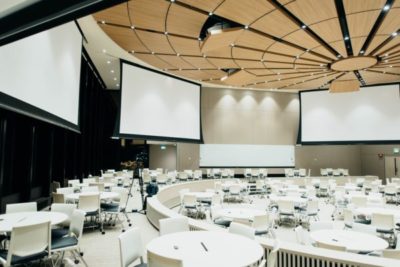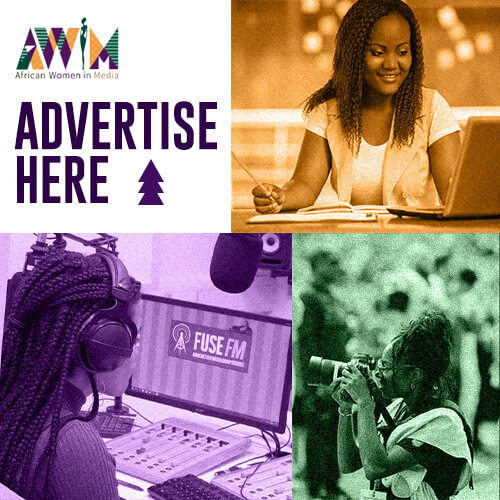Groundbreaking Workshop on AI and Technology-Facilitated Gender-Based Violence at AWiM24
Trending
Sunday June 1, 2025
Trending

Planning #AWIM18 conference outside my 9-5 life was not so easy. The fact that I was outside the country made it more difficult than I expected. Fortunately, I had good people and organisations around me. Gotcha Communications managed the event while Butterfly Tourism handled the travel and accommodation arrangements. My network of friends and AWIM members helped. I want to specially recognize the support of Funke Treasure Durodola (FRCN Lagos), Mofolusade Sonaike (mumpreneur.ng), Ijeoma Onyeator (Channels Television), and Taiwo Obe (Journalism Clinic) who all offered advise and guidance at various points.
Putting together a Pitch Deck for the conference was a great exercise, not only did I end up with a proposal that I could send to prospective sponsors, but the process itself helped me think through what the conference was and what it wasn’t. What’s a pitch deck? A pitch deck is a presentation used to give an overview of your plans. If you have a business, you would have experienced putting together a pitch deck for potential investors. Like writing a business plan, a pitch deck spells out what your objectives are, how you plan to meet them, and most importantly, a sponsor wants to know what’s in it for them? Why should they spend their marketing money on your event?
It’s a good idea to already have this in mind when you are approaching prospective sponsors. I started approaching people very early on, asking for a show of interest at first for industry speakers, while I sent a call for papers for academic speakers. The first person I secured was the Keynote Speaker. Give it time to secure your Keynote as it can take several months.
I knew AWIM18 was going to be in Nigeria, it was most likely going to be in Ibadan, but for a period I explored Lagos. So I kept the exact location vague for the first set of pitch decks sent out. Once you do have this sorted though, you should send out Save the Date notices to your network and prospective attendees. Start making some noise, and build the news as the momentum builds.
Again, this is something you want to have an idea about earlier on. Who do you need around you to help make your event a reality. This will vary depending on the size of the event. I targeted 150 attendees for AWIM18 (we had double that on the day), and I knew earlier on I would need a variety of suppliers (caterers for example). However as I was organising the conference from the other side of the world, I hired an events company and travel agency to take care of organising the aspects of the conference that needed someone physically on ground.
Determining the right price to charge for your fee is dependent on several factors. Firstly, who are your target attendees and what is their pocket like? AWIM18 was targeting female journalists primarily, and as we all know journalists are not well-paid in most African countries. Secondly, how much will the event cost you and are you able to recoup the expenditure through sponsors? If you can, then you don’t have to worry about recouping the spend through ticket sales. We were lucky to have Ford Foundation sponsoring 80 female journalists to attend the conference – special thanks to them.
Marketing was where I hit a snag. I thought much of the promotion could happen with the African Women in the Media Facebook group, after all we had over 700 members. However as it turned out, the way Facebook’s algorithms works meant that only a handful of members were actually getting the posts. I employed a social media marketer, but I should have also planned for TV and radio adverts. Press releases are also an important aspect of this process, as well as getting social media influencers to talk about your event through their channels.
You can put together an event and have a good line up of speakers, without the active participation of attendees and the confident delivery of your speakers and trainers, the event can still flop on the day. For AWIM18, that didn’t happen, it was a success because everyone, the attendees, speakers, trainers, suppliers, took ownership of the event and were active participants. Thank you!
For AWIM17, I targeted 30 people and hosted 55. For AWIM18 the target was 150 and got double that. There were 38 speakers, 10 workshops, and a pitch zone hosted by BBC, CNN and the National Resources Governance Institute (NRGI). It was a great programme and it worked seamlessly due to the good work of the different groups who played their part.
I identified three key points that came out of our discussions:
1- Childcare and maternity rights. Eugenia Abu said it was not until her youngest child was 18 years old that she found out she was entitled to leave the office at 2pm when she was a nursing mother. There was also the issue of women being limited to having a certain number of children over a period of time.
2- The need for mentorship by women in leading positions who can nurture others coming up.
3- Many journalists said that they had never thought about the importance of gender consciousness…what a revelation that was!
Everyone got involved and let their hair down during the dinner. It was an amazing experience for everyone. I look forward to AWIM Festival 2019 (#AWIMFest19) which will be in Kenya.
Nugget: “None of us is as smart as all of us.” –Ken Blanchard
We’re not gonna spam. We’ll try at least.

Copyright 2020. African Women In Media
Copyright 2020. African Women In Media
Recent Comments